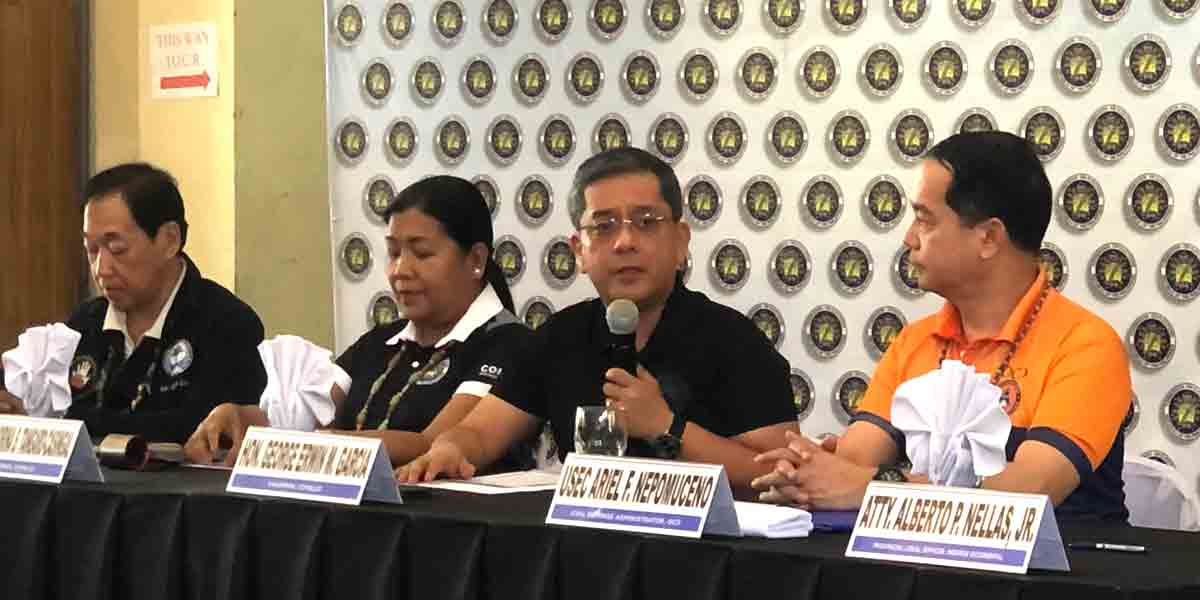
Story and photos by Leonard T. Pineda I
What was Western Visayas millions of years ago?
People may now be able to find the answer to this question through a visit to the Geology and Paleontology Exhibition Hall of the National Museum Western Visayas in Iloilo City.
The exhibit, which opened to the public last month, will enable Ilonggos to learn about their region’s prehistoric past and geological events that heavily impacted its physical landscape.
In a media release, Dr. Ana Labrador, Deputy Director-General of the National Museum of the Philippines (NMP), said that the gallery would provide the public an insight into the region’s complex geology.

“Through the exhibition, one will learn that the biodiversity and endemism of species in both Panay and Negros Islands are the results of their unique geological formation,” she said.
Over the past 250 million years, Western Visayas has seen many geographical, topographical, and climatic changes, as well as seeing life diversified as new lands emerged from the sea.
Within its prehistory, elephants and stegodonts roamed here, volcanic eruptions created fertile stretches of land, and islands had been dramatically altered by the Last Ice Age.

Jaan Ruy Conrad P. Nogot, Senior Museum Researcher of NMP’s Geology and Paleontology Division, said that the exhibitions hope to provide scientific answers to questions on the origin of life on earth and how did humans adapt to their environment to survive.
“We also hope to explain in simplest terms why there are similarities in the flora and fauna in the islands of the region and correlate it with the similarities of the way of life of Western Visayans,” he said.
Meanwhile, Maricyn De los Santos, Information Officer of NM Western Visayas, said the exhibition is the culmination of years of research and fieldwork of NMP staff and the product of tedious exhibit planning, conceptualization and fund sourcing led by the Geology and Paleontology Division.
She said the exhibition is divided into three themes: Treasures of the Earth, Traces of Ancient Life and Western Visayas Through Time.
The centerpiece of the gallery are the fossilized teeth of extinct elephant species, Elephas sp., and stegodont (Stegodon sp.), found in Cabatuan, Iloilo.

These were discovered buried in the Pleistocene rock formation called Cabatuan Formation.
The public can also view the samples of the region’s rich mineral resources including tektite, the glassy rocks of possible extraterrestrial origin, collected in Iloilo province, one of the few locations in the world with known tektite deposits.
Visitors can also learn about the region’s flora and fauna dating back five million years ago through the marine and plant fossils.
The exhibit also has an activity area, where visitors particularly students, can do sketches or create drawings of some sample materials inside the gallery.
“The exhibit turned our imagination to reality,” said John Balbaguio, a civil engineering student from the Western Institute of Technology.
He said that the exhibit gave them tangible pieces of evidence of the things they learned from their history book and geological reference materials.
The National Museum Western Visayas is located at the Iloilo Capitol Complex, Bonifacio Drive, Iloilo City.
The museum is open Tuesdays to Sundays, 8:30 a.m. to 5 p.m. Entrance is free. Group tours (more than 20 persons) must be booked through email [email protected] or through phone at 327-3782. (NMP/PIA-Iloilo)























